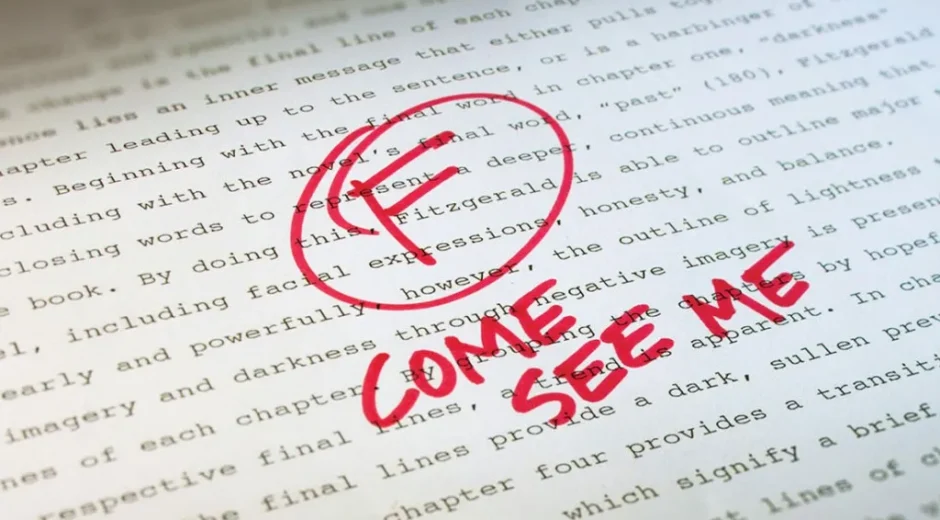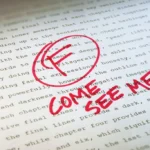One of the unfortunate aspects of being a university professor in the current moment is that we have become inadvertent experts in picking out AI-generated garbage from real student work. This is necessary because the ease of access to ChatGPT and the like has meant that our classrooms are simply drowning in AI-generated writing.
As I began to pick through the “Liberation Day” global tariff plan, I started to feel that familiar itch in the back of my mind… that feeling that this was not written by a human.
I’m hardly the only person to notice this, it’s been a point of speculation by various authors since then, and many of them bring up good points. My contribution to this debate is to point out the reasons why, if this plan was submitted to me as a paper for my “Social Science and Public Policy” class, I would send it back with an F and the request to “see me please” written in red ink at the top.

(1) Where are the Sources?
My students are, of course, required to cite their sources and learning how to do a proper bibliography is a tedious part of every introduction class. As I tell my students, citation isn’t just about ‘giving credit’ to authors, it’s also about us being able to track your logic. Good citation practices help your readers understand who has influenced your thinking and let them track down the origins of certain ideas. It also allows us to tell which parts of your writing are your original ideas and which you have based upon someone else’s work.
While a Federal tariff plan doesn’t need a works cited page, we would expect there to be someone whose expertise it draws upon. The logic and structure of this plan seems to come entirely out of the blue, created whole cloth — which is incredibly rare. People have been writing about tariffs and advocating for tariff plans for years and I think most observers expected them to be drawn upon.
More directly, where are all of the experts at the Commerce or State Departments who helped draft this? Where was the team the researched and developed the methodology? Why aren’t they making the rounds on news shows to explain their work and why they came to this radical proposal?

(2) What is the Logic?
One of the key ways to tell AI-derived writing from human writing is that AI-generated arguments often look legitimate at the start but fall apart under the gentle pressure of basic questions.
When we boil down all of the smoke-screens, the central calculation that the White House used was:
“take the trade deficit for the US in goods with a particular country, divide that by the total goods imports from that country and then divide that number by two.” (source)
These tariffs are, of course, supposed to be punishment for artificial trade barriers keeping out American goods, including tariffs from other countries. Such one-sided tariffs and barriers do, of course, exist and could be easily calculated by an entity as large as the US federal government.
But instead, we are looking at the trade deficit in goods. This means how much the people of that country import US-made goods. Many of the countries on the tariff list import very little US goods because they are incredibly poor and what the US exports tends to be expensive.
For instance, the tiny southern African kingdom of Lesotho was hit by the highest tariff rate: 50%. Lesotho is one of the poorest countries in the world, in large part because it was constructed by the British and then Apartheid South Africa as a source of dirt cheap migrant labor for South African mines and farms. The country has only two exports to the US: a diamond mine and a Levi-Strauss jeans factory. In what must be a particularly bitter irony for Lesotho, this factory was constructed in response to the African Growth and Opportunity Act — a US law and trade agreement specifically designed to help spur exactly this kind of manufacturing by US companies on the continent.
In sum, Lesotho does not have unfair tariffs on US goods nor does it have any significant legal trade barriers to US import. It does not import US goods because Lesotho is desperately poor and it exports to the US specifically because the US government encouraged textile firms to establish factories. It is understandable that the kingdom is “baffled” by the new tariff rate.
It is exactly this kind of logic — which seems straightforward with a surface glance but falls apart at the first touch — which characterizes AI-generated arguments. It’s clear that nobody thought through them, because… nobody thought through them.
(3) Haven’t you done this before?
As a professor collecting evidence, one piece that is important to take into account, but isn’t a smoking gun in itself, is whether the student has a history of using AI. I think you’ll find that most professors know that there are some students that seem to be so addicted to generative AI like ChatGPT that they have great difficulty avoiding it.
The Trump Administration has already shown itself to be exactly this kind of student. Early on, it created a new AI.gov website, doubled funding to $500 billion for AI, sought to open Federal lands for AI centers, and gutted the Biden-era regulatory framework that sought to protect workers from AI competition.
What’s more, it’s becoming increasingly obvious that individuals within the Administration are enamored with using generative AI for their daily work. This seems to be particularly important among the young staffers brought in by Elon Musk to run “DOGE.” When a group of senior staffers who had been co-opted into DOGE resigned, they described a culture where the incomers used ChatGPT from the most basic to the weightiest of decisions. It has been clear in the months since, that AI was being used to make cuts and this lead to numerous problems such as cuts to a grant studying bird populations because it used the word “diversity.”
To circle back to our metaphor: the Trump Administration is like a wannabe tech-bro who talks about AI and crypto constantly, uses AI to organize the basics of their own life and has previously used AI to submit work (and wasn’t punished!). Does this prove that they used AI this time? No, of course not, but it certainly makes you think.
(4) That Little Human Touch
Most of our students are aware that they are not supposed to hand in purely AI-generated work. This means that many of them think it is acceptable to go through and lightly edit the output to make it somewhat more palatable or, often, to add small flourishes in an attempt to humanize the product.
I think we can see evidence of this process in the halving of the eventual tariff rates and the emphasis on how this shows Donald Trump’s “kindness.”
The new tariff rates are, simply, astonishing and massively punitive. If they remain standing, they will devastate entire economies. However, they are half of what the original calculation calls for. This halving is described by the White House as an act of “kindness” and generosity.
This feels, to me, to be one of those moments where the student looked over their paper and realized that what they were proposing was so absurd that it simply would not carry water. The original tariff rates were so extreme that someone in the White House realize that they simply could not pass muster. So, instead of going back to the drawing board and (presumably) writing another ChatGPT prompt, they simply cut the numbers in half and created the ‘kindness’ fiction.

(5) Why is There Nonsense?
I have saved the most damning for last. Those who follow the debates of Generative AI know that AI-created images often have really weird nonsense — famously a habit of creating hands with six fingers. There is an emerging genre of people highlighting absurdities in AI images that no human would include.
This inclusion of nonsense, which includes “AI hallucinations” (the penchant to simply create patently false information), is one of the hallmarks of AI-generated work and when we see the inclusion of items that no human would consider including into a project, that is the most damning evidence that it wasn’t written by humans.
Of course, we find exactly this kind of nonsense in the tariff plan in the form of absurd inclusions into the tariff list. This came to my attention in the form of memes of throngs of penguins “protesting” the tariffs.
Looking into it, I realized that the plan had include numerous places which have no inhabitants or their populations are so small that they literally have no trade with the United States.
This includes frozen human-free polar islands such as Heard Island, the McDonald Islands and Jan Mayen. According to Australia, which oversees the McDonald Islands, the last known visit by humans was in 1980. Also included is Svalbard, whose 2,500 residents did no trade (in either direction) with the US and the British Indian Ocean Territory whose only residents are US soldiers and DOD contractors on the American military base on Diego Garcia.
The inclusion of these territories on the tariff list is clear evidence that no human generated this list. Why would any person add an island that hasn’t seen a human in 45 years or a US military base to the list of trade partners? The simple answer is: no person did. These are the tariff equivalent of sixth fingers and AI hallucinations, the generative garbage that inevitably crops up when machine ‘intelligence’ seeks to create something new.
“F — See Me Please”
In the end, proving that a particular piece of writing was AI generated is often hard and requires follow-up, hence the “See Me Please” on the student’s paper. For the professor facing these problems, there is really only one way to move forward: the student needs to be confronted with the inconsistencies and nonsense of their work and be asked to defend it.
The same needs to be done for the Trump Administration. Journalists, congresspeople and the American people need to demand that the Administration “show its work.” We need to demand to know where are the experts that created this plan? We must expose the nonsense and not just laugh off the inclusion of McDonald Island or Jan Mayen, but instead hammer on them: why were they included? What logic led to their presence on the lists? We should be exposing the casual cruelties of destroying economies like Lesotho’s — especially when it was American policy that created those trade relationships in the first place.
Finally, we should continue to make the condemnation of irresponsible, exploitative AI central to our critiques of this administration and its tech-bro minions. Stupid AI should be the albatross dragging down all who carelessly embrace its use.
Appreciate what you read here? Consider buying me a coffee.
For more on tariff policy see my followup“Will Tariffs Kill of Indy Board Games?”
Source: www.medium.com




